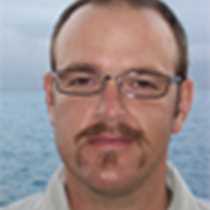Santiago is an important symbol in Galapagos not only for its historic significance but also for is conservation status. Charles Darwin set foot on this island in 1835 and was able to see an incredible diversity of life that was to influence his writings later on. Over the past two centuries decimation of the island has happened due to the introduction of feral pigs and goats; however that has changed with these destructive species being eliminated. Areas that were becoming destroyed environments are lush with endemic vegetation again thanks to coordinated conservation efforts. We landed this morning at Espumilla Beach and encountered one of the largest nesting areas for the Pacific green sea turtle. A wall of old growth mangroves hides our trail as we head in land. Three juvenile Galapagos hawks welcome us with their curiosity as we walk within a few feet of them. Gaining some altitude from the coast we find massive Palo Santo trees and are treated to the strong fragrance that emulates from the resin of the trees. All contemplate for a moment as we are walking Darwin’s footsteps and we ponder what he may of seen here on the day that he landed.
Kayakers take a different route as they paddle along the coast of Espumilla heading towards Buccaneer’s Cove and massive cliffs that show the violent volcanic past that formed this island. Large Galapagos fur seals give us a look as they try to find a comfortable basalt flow to rest upon awaiting the time to forage in the ocean once again. Later in the morning we head out to Buccaneer’s Cove to explore the undersea world and white-tipped reef sharks, rays, and schools of surgeon fish do not disappoint as we enter their realm. The coast is a mix of volcanic contrasts as we search from the Zodiacs and find Nazca boobies, brown noddies, and pelicans feeding in the shallows.
The afternoon brings us to James Bay and Egas Port which had a small human population here up until the 1960’s operating a salt “mine.” Exploration starts along the coast where we walk upon a substrate of lava flows, compacted ash, and sand. Lava tubes that formed, emptying out into the ocean, have had part of the rooftops collapse leaving bridges for us to walk upon. Yellow crown night herons find small ledges to roost upon with Galapagos fur seals resting nearby. The intertidal zone is in constant movement with life with American oystercatchers picking in the tidal pools looking for sea urchins and crustaceans. Yellow warblers flit back and forth catching small insects and marine iguanas start to huddle trying to retain heat until the morning light. The sun dipping over Isabela Island in the distance is our cue to return aboard all the while feeling, we assume, very much like Darwin did during his visit to this magical place.







